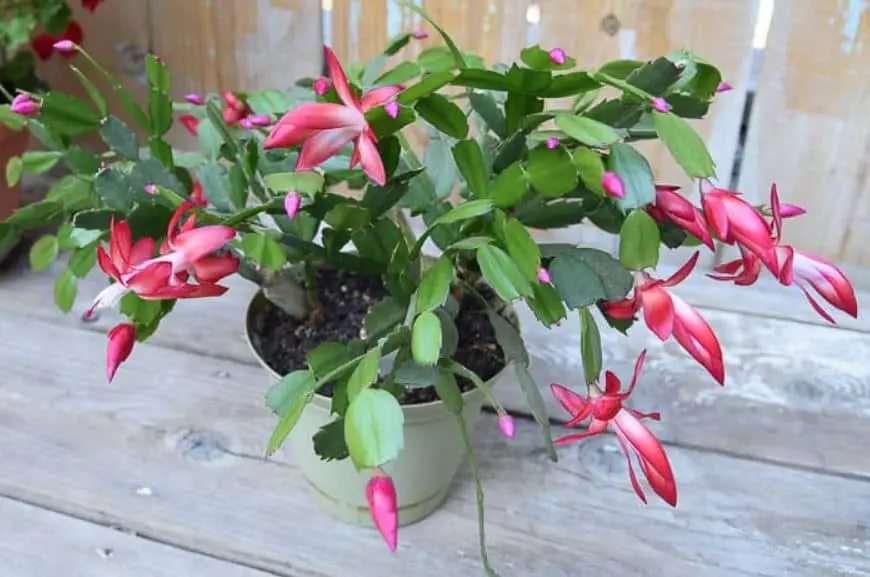Almost any indoor area would benefit from the common Christmas Cactus (Schlumbergera bridgesii), which blooms all through the winter. It is a superb contender for holiday gift-giving since it is simple to maintain and readily multiplies. Let us examine how to grow and maintain a Christmas cactus.
Identifying if you have a Christmas cactus is the first step. Thanksgiving and Easter cactus resemble one other superficially. To determine which holiday cactus you own, go here.

How to Plant a Christmas Cactus
The Christmas cactus is easy to propagate since the stem tips may be quickly cut into a Y shape. However, make sure that the cutting is only produced from robust plant leaves. Place the portion approximately one-fourth of the way down in the somewhat sandier soil, after being adequately moistened, place the cutting away from direct sunlight in an area that is well-lit.
For the purpose of taking cuttings for new plants, prune back shoots from the tips by cutting at the second joint of each tip. Give it a few days to callous over. Within a few weeks, the cutting should start to show indications of growth. If preferred, the plant may be moved to another container with a looser potting soil mixture of compost, loam, and sand. The soil pH balance should range from 5.5 to 6.2 for the plant to thrive.
How to Take Care of a Christmas Cactus
According to information on how to care for Christmas cacti, they thrive in typical household settings with little attention. The Christmas cactus can tolerate low light levels, but the plant will blossom more quickly if exposed to greater light. However, the Christmas cactus’s leaves may be damaged by excessive direct sunlight, so maintain it in a suitable location to prevent this.
Additionally, moisture is crucial for the Christmas cactus. During the plant’s vigorous development in the spring and summer, regular and thorough watering is required to maintain a moist soil environment. Never let the Christmas cactus stay in the water, which can cause root and stem rot. Instead, let the plant’s moisture levels fall and dry out a little between waterings. A light fertilizer solution may also be applied to indoor plants every other week.
Remember that the Christmas cactus enjoys ordinary to high humidity levels, with temperatures ranging from 60 to 70 degrees F (15-21 degrees C). More humidity may be added to the house by putting a plate of pebbles filled with water below the Christmas cactus container. By providing proper hydration and avoiding exposure to chilly breezes, unvented heaters, or hard handling, you may assist the plant in retaining its bud set. Bud growth may be hampered by nighttime temperatures exceeding 70 degrees Fahrenheit.
After Flowering
The Christmas cactus should be allowed to start its dormant cycle by limiting hydration, light, and temperature after all blooming has stopped (often by autumn) or around six to eight weeks before you want the plant to rebloom. These plants need shorter days and chilly nights after flowering. Once the plant has done flowering, it begins to grow actively.
Reduce the amount of watering you give the plant, and make sure it has 12–14 hours of darkness each night and typical temperatures of 50–55 F. (10-12 C.). Along with avoiding draughty regions and abrupt changes in moisture, temperature, or sunshine, keep the Christmas cactus away from them.
Major Problems
There might be a few causes if your lovely plant does not bear many flowers or starts to lose its buds. Try giving it 13 continuous hours of complete darkness at night. The Christmas cactus may respond to a rapid dip in temperature by withholding or removing its blossoms. A delicate cloth or swab soaked in alcohol may gently brush away mealy bugs, aphids, and scale, which are sporadic visitors.

